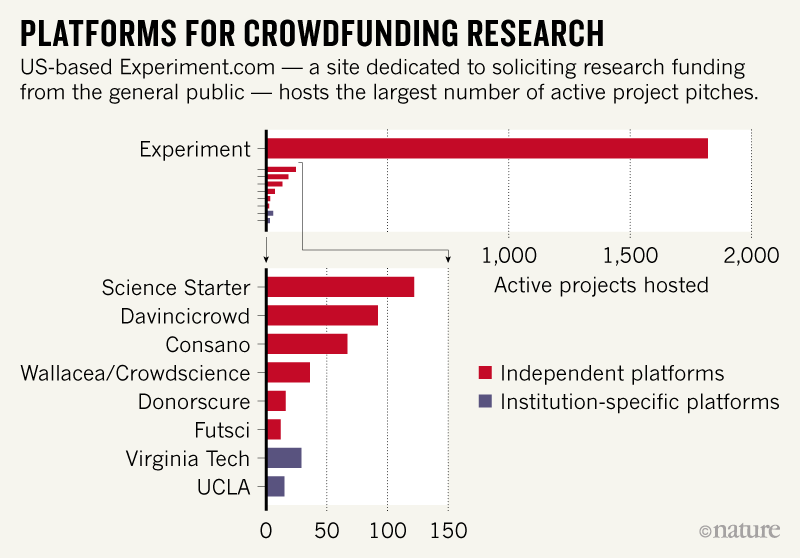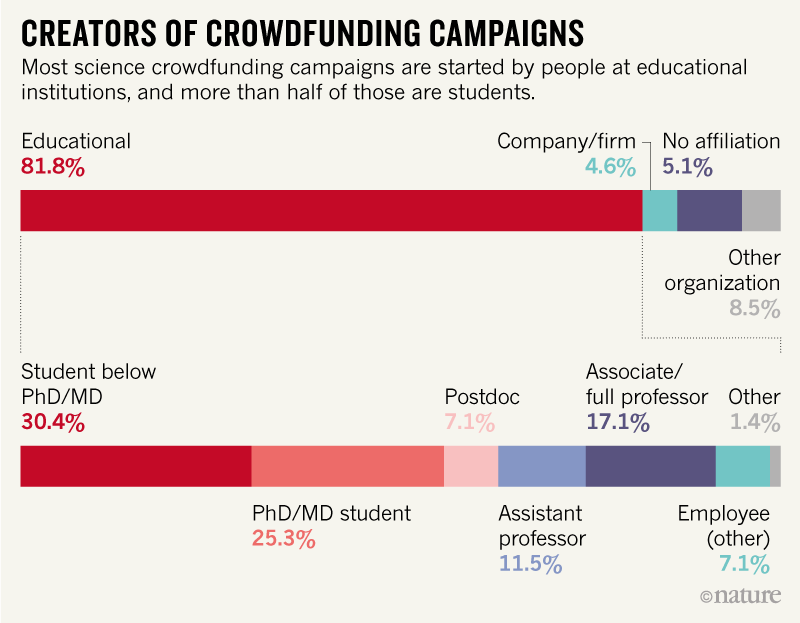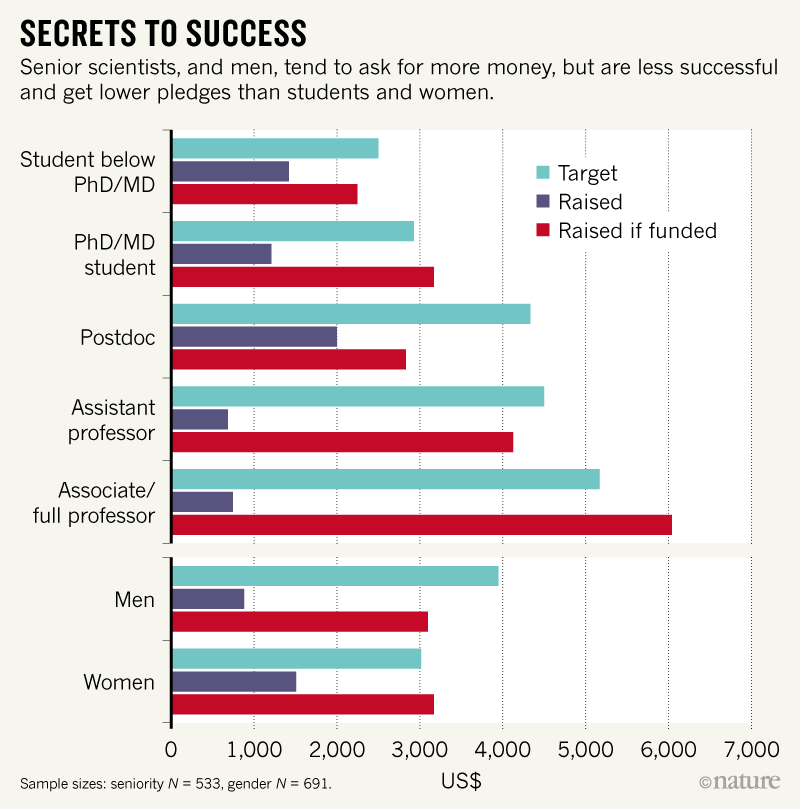No papers? No problem. Scientists who have historically been at a disadvantage when pursuing traditional funding sources — for example, those who lack extensive experience or who do not demonstrate a good publication record — are now the most successful at sourcing money from the public.
But the money they net via crowdfunding websites tends to be smaller than grants secured from funding agencies, according to the team led by Henry Sauermann, a social scientist at the business school ESMT Berlin, Germany.
To get an understanding of who succeeds at crowdfunding science, Sauermann’s team analysed 700 pitches posted by scientists on the crowdfunding platform Experiment.com, which is based in New York City. This website is available for scientists to bid for research money from the general public (See ‘Platforms for crowdfunding research’ and ‘Creators of crowdfunding campaigns’).
Source: H. Sauermann et al. PLoS ONE 14, e0208384 (2019).
Source: H. Sauermann et al. PLoS ONE 14, e0208384 (2019).
Researchers post a brief outline of their research idea, a description of what they plan to spend the money on and a biography. Donors typically pledge small amounts, which are only transferred to the scientist once a predefined target has been met.
Women raise more
The team found that women were more successful than men at raising money using the platform, and less-experienced scientists — such as PhD students and postdocs — had greater success than more-experienced ones1. Scientists without a PhD had a success rate of 61%, compared with 33% for associate professors or professors, but these novice scientists also generally asked for less money. Across all levels of seniority, women had a success rate of 57%, compared with 43% for men (See ‘Secrets to success’).
Source: H. Sauermann et al. PLoS ONE 14, e0208384 (2019).
In addition, listing previous journal publications on the project page did not make it more likely that the project would get funded.
“Crowdfunding has opened the door for people who would not be able to participate in the traditional grant funding mechanism,” says Sauermann.
But the team is unsure as to why certain groups tend to be more successful at crowdfunding than others. It could be that younger scientists are reaching out more effectively on social media or have more-creative ideas; or the public might prefer to fund the underdog. Sauermann hopes that future research will determine what drives these differences.
Funding freedom
Researchers use crowdfunding to acquire relatively small amounts of money — the average project target between May 2012 and August 2015, the period sampled, was US$6,460.
But the experience of Will Ludington, a biophysicist at the Carnegie Institution for Science in Baltimore, Maryland, shows that bigger grants and greater freedom from bureaucracy are available through crowdsourcing. When Ludington was a postdoc, he was part of a group that raised $350,000 through the crowdfunding site Indiegogo in 2013, for a project named uBiome.
The project was designed to create the largest online database of samples taken from the human microbiome. It has since become a microbial genomics company, based in San Francisco, California, with which Ludington is no longer involved.
He says that it took just six months to go from research idea to funded project using crowdsourcing and that he chose this route, in part, because there was “no bureaucratic wall” around how to use the funds. “You can use crowdfunding for projects that aren’t in the well-defined scope of a traditional granting agency,” he adds.
Sauermann says that crowdfunding for science does bring opportunities, but adds that it is a fairly new phenomenon so it is not yet clear what the limitations could be. For example, he adds, people using crowdfunding sites may be “only funding things that seem really sexy but they are not funding basic science”.
doi: 10.1038/d41586-019-00104-1
References
- 1.Sauermann, H., Franzoni, C. & Shafi, K. PLoS ONE 14, e0208384 (2019).



No comments:
Post a Comment
Note: Only a member of this blog may post a comment.